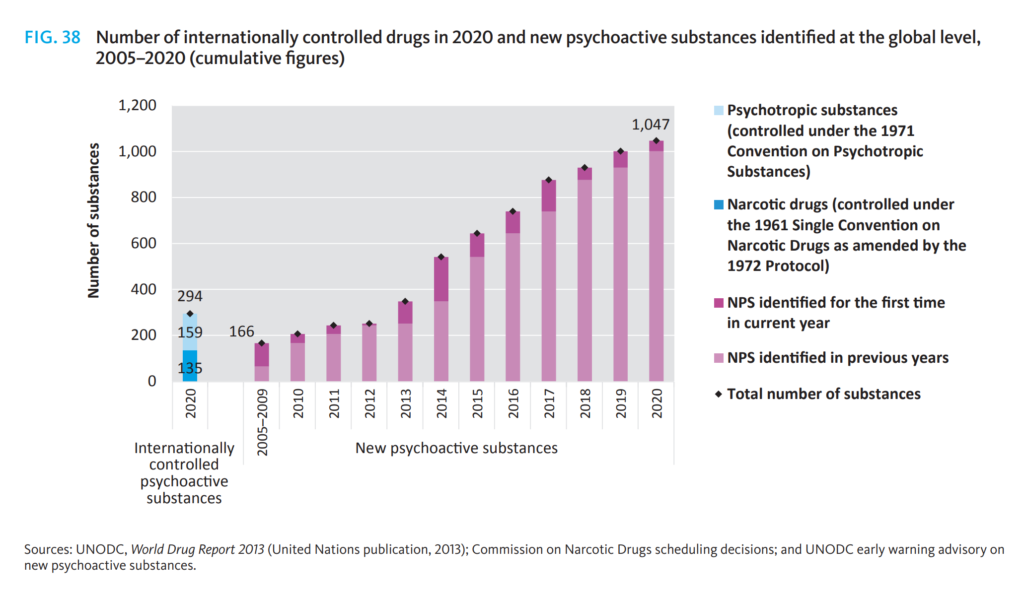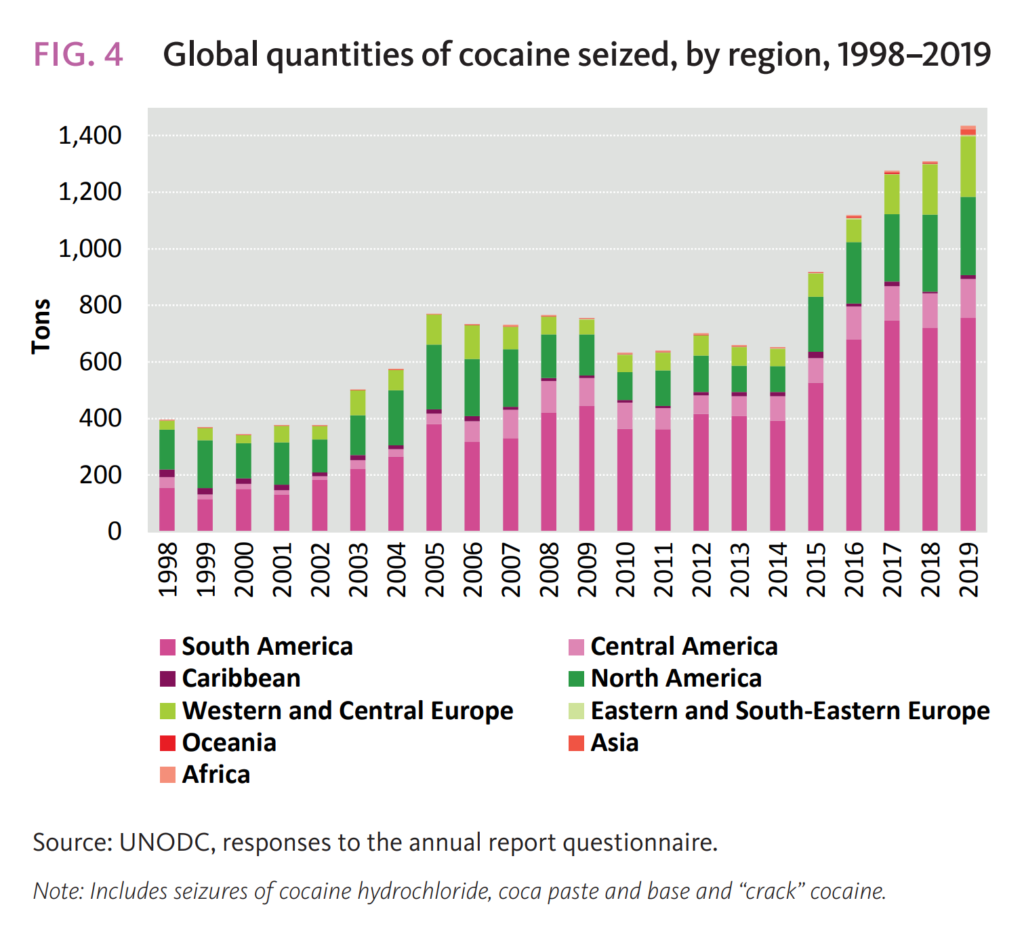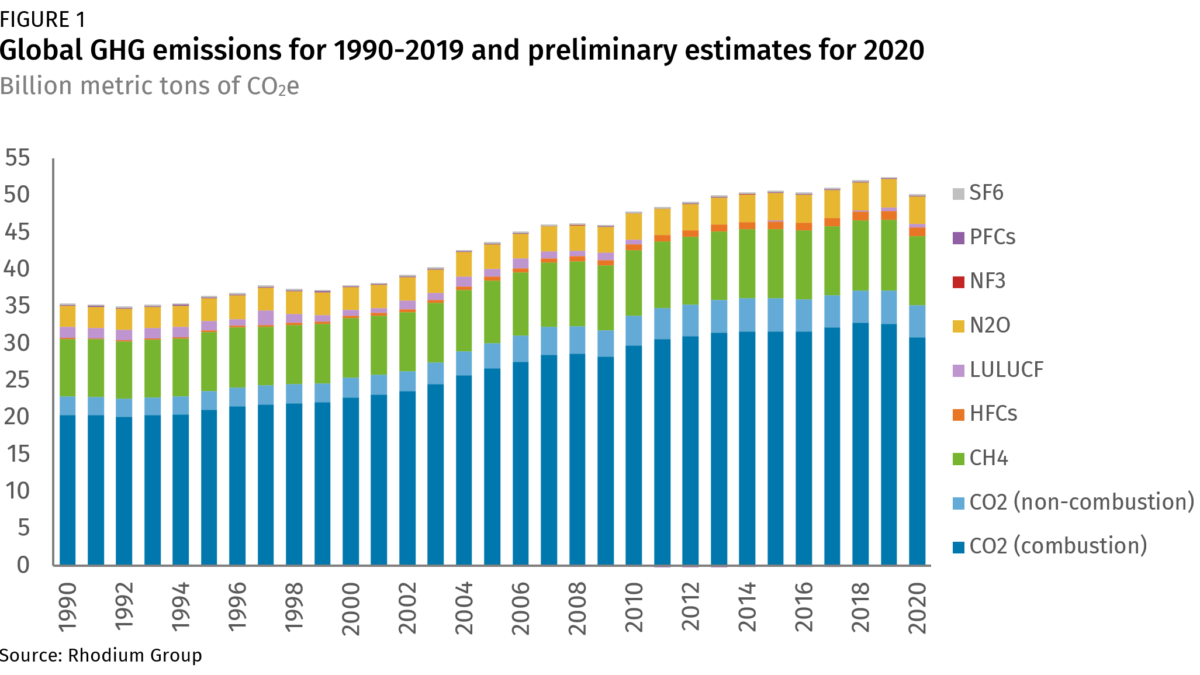Illegal drug trade back to business as usual in 2020 and 2021 – Cocaine production hits record high – Number of people using illegal drugs increased by 22 percent in 2010-2019 decade
![Global opium production and cocaine manufacture, 1998–2020. Global cocaine manufacture, which had fallen by 37 percent over the period 2006–2014, more than doubled over the period 2014–2019, rising by 4 percent in 2019 to reach an estimated 1,784 tons (expressed at a purity of 100 percent). The marked increase in global cocaine manufacture since 2014 has primarily been the result of changes in Colombia, which accounts for the majority (64 percent in 2019) of the global estimated manufacture of cocaine. Increases in cocaine manufacture in 2018 and 2019 took place despite declines in the area under coca bush cultivation in Colombia during that period, owing to ongoing increases in “productive areas” under coca bush cultivation and improvements in the yield. [“Agricultural intensification” in coca production. –Desdemona] Graphic: UNODC](https://desdemonadespair.net/wp-content/uploads/2021/06/Global-opium-production-and-cocaine-manufacture-1998–2020-UNODC-1024x843.png)
By Pia Lee-Brago
28 June 2021
(The Philippine Star) – Around 275 million people used illegal drugs worldwide in the last year of unprecedented upheaval caused by the COVID-19 pandemic, up by 22 percent from 2010, and it is “business as usual” again for drug traffickers, according to the latest annual world drug report by the United Nations [World Drug Report 2021].
The United Nations Office on Drugs and Crime (UNODC)’s World Drug Report 2021, which provides an overview of global drug markets and their impact on people’s health and livelihoods, shows that drug markets have swiftly resumed operations after the initial disruption at the onset of the pandemic – a burst that has triggered or accelerated certain pre-existing trafficking dynamics across the global drug market.

Among these are increasingly larger shipments of illicit drugs, a rise in the frequency of overland and waterway routes used for trafficking, greater use of private planes for the purpose of drug trafficking, and an upsurge in the use of contactless methods to deliver drugs to end-consumers.
The new report reveals that drug traffickers have quickly recovered from initial setbacks caused by lockdown restrictions and are operating at pre-pandemic levels once again, driven in part by a rise in the use of technology and cryptocurrency payments, operating outside the regular financial system.
“The resilience of drug markets during the pandemic has demonstrated once again traffickers’ ability to adapt quickly to changed environments and circumstances,” according to the report. […]

Among the key findings of the report: between 2010-2019 the number of people using drugs increased by 22 percent, owing in part to increase in the global population; roughly 200 million people used cannabis in 2019, representing four percent of the global population; the number of cannabis users has increased by nearly 18 percent over the past decade; an estimated 20 million people used cocaine in 2019, corresponding to 0.4 percent of the global population; roughly 50,000 people died from opioid overdoses in the US in 2019, more than double the 2010 figure, and Fentanyl and its analogs now are involved in most of the deaths.
According to latest global estimates, about 5.5 percent of the population aged between 15 and 64 years have used drugs at least once in the past year, while 36.3 million people, or 13 percent of the total number of persons who use drugs, suffer from drug use disorders.
Globally, over 11 million people are estimated to inject drugs, half of whom are living with hepatitis C. Opioids continue to account for the largest burden of disease attributed to drug use. [more]


